Why does outdoor IoT solution need IoT in a box ?
- Richard Wang
- September 30, 2024
- 10:27 am
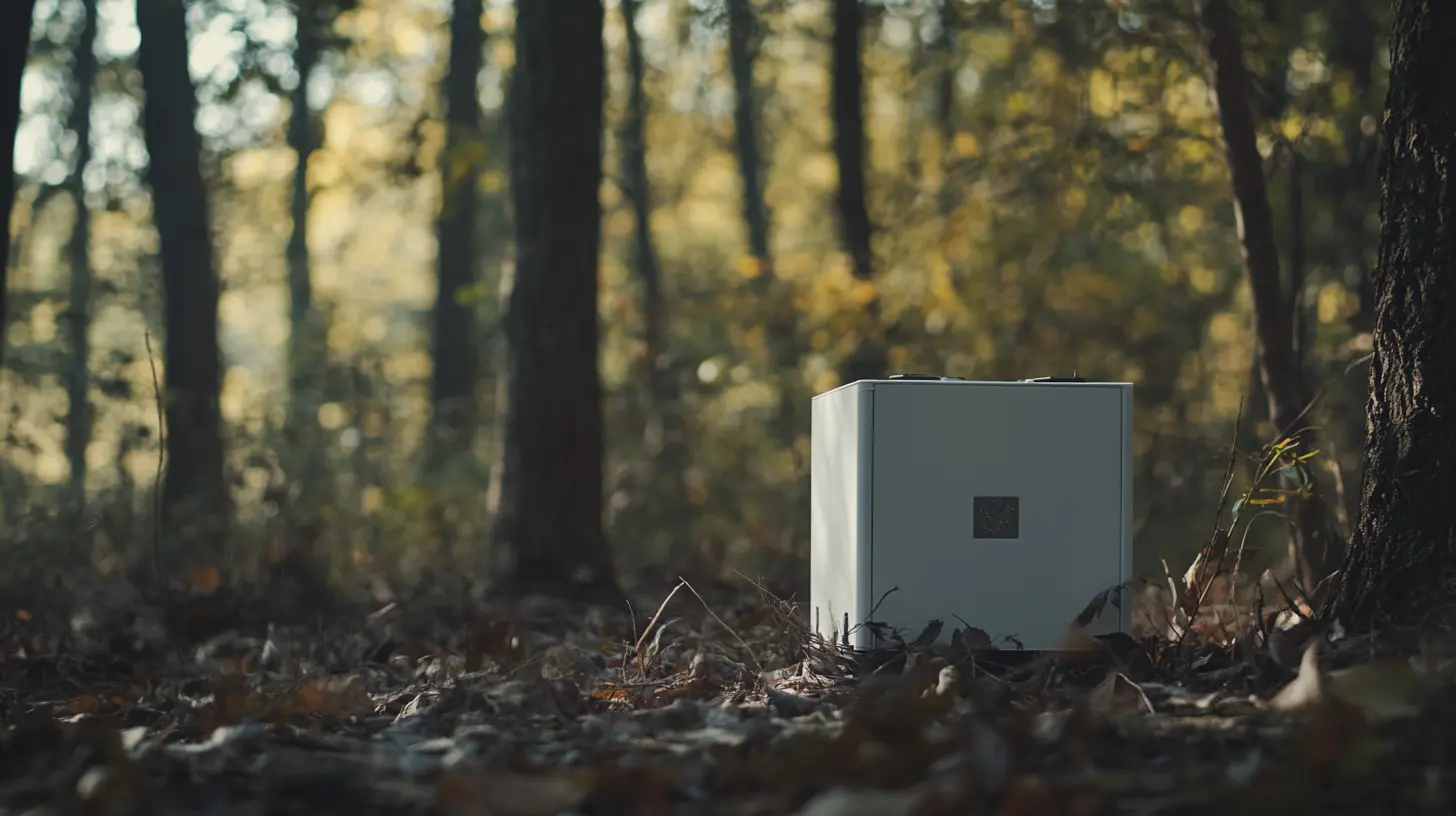
Preface
IoT deployment outdoors is often not a simple IoT gateway that can solve all problems. It needs to take various factors into consideration, such as how to obtain electricity, how to consider outdoor lightning protection, how to integrate different types of IoT Sesnor, edge computing and control, heat dissipation, waterproofing, maintenance and other factors. This is a huge challenge for different types of customers, and it involves knowledge and experience in various aspects. Therefore, Edgeware proposes the concept of IoT in a box, so that Edgeware can help customers design and standardize IoT scenarios. Customers only need to think from the perspective of IoT scenarios and applications, and no longer need to involve the detailed design of IoT outdoor deployment.
Table of Contents
1.Main Challenge of IoT Solution Outdoors
1.1 Common IoT Gateways on the Market

The typical form of IoT gateways and IoT routers on the market is shown in the figure above. The figure above is Edgeware’s EX800 series. Such typical IoT gateways generally have the following capabilities:
(1) Have some IoT sensor integration interfaces such as RS485, RS232, DI, DO.
(2) Have Ethernet interfaces
(3) 4G or 5G backhaul functions
(4) Some more advanced gateways or routers have edge computing and control capabilities
(5) IoT Gateways have poor support for routing and network protocols, while IoT Routers have more complete support for routing and network protocols.
For different scenarios, the design forms of each manufacturer will be slightly different, but they are basically within the concept of the figure above. But is such a design really enough?
1.2 Challenges of Outdoor IoT Deployment
However, the outdoor IoT solution cannot be provided by a standard IoT gateway or IoT router alone. It faces many challenges.
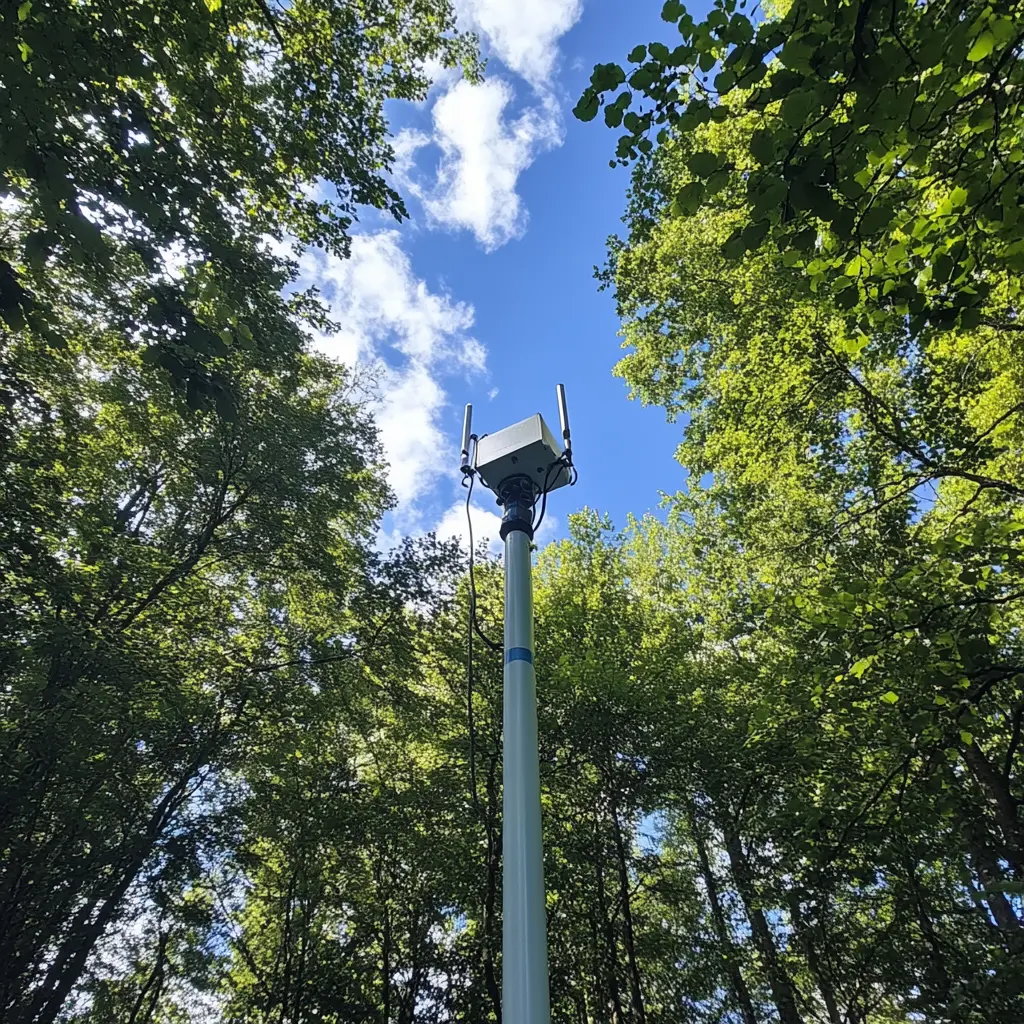
The above picture is an outdoor scene. Based on this type of scene, we can see the following problems that need to be solved:
- Adaptation to outdoor scenarios
- Power acquisition
- Outdoor grounding and lightning protection
- Design solutions based on IoT scenarios
- Software monitoring and management
This series of problems cannot be solved by a standard indoor IP20-level IoT Gateway or IoT router. Based on this, Edgeware proposed the IoT in a box solution. But before introducing the IoT in a box solution, let’s first analyze in detail the specific challenges faced by the outdoor environment.
1.3 Adapation to Outdoor Scenarios for IoT
The outdoor environment is much more complex than the indoor environment. The first thing to consider in the outdoor environment is the waterproofing problem. This is of course not difficult to solve, and it can be solved by using the general outdoor cabinet solution. However, IoT solutions are often deployed in relatively complex environments, such as:

Forest Environment
For some forest monitoring solutions or IoT solutions for mountain disaster prevention, the forest environment they are in usually has a large climate change between morning and evening and between the four seasons. In particular, the humidity is sometimes very high, and if the temperature happens to be in some unfortunate range, condensation will form inside the outdoor cabinet. This poses a great challenge to the long-term stable operation of IoT devices.

Coastal Area
Many IoT projects will be deployed in coastal cities or regions. These areas will face high humidity and high salinity air even in cities. High salinity and high humidity air over the years will cause a lot of rust in IoT cabinets built with general outdoor cabinets. And because the general IoT cabinet has an IP55 protection level, air will invade the cabinet and further affect the stability of devices such as IoT controllers and industrial iot gates.
The following are typical cases:
Reference Video:

Deseart Areas
Deserts may sound far away, but in fact, there are many large cities on the edge of deserts in the Middle East. For example, cities in Saudi Arabia and Iraq. The biggest problem facing outdoor IoT solutions in these cities is the damage of sand and dust to IoT cabients. General outdoor IoT solutions cannot work stably in this area for a long time. In addition, this area also faces the problem of high temperature.
1.4 Power Acquisition
Outdoor IoT solution will be deployed outdoors, which means it can be anywhere. In this case, it is difficult to ensure that the site has a stable power supply. Generally, there are the following situations:
The site has power supply, but it is unstable
Oftentimes, when an outdoor IoT solution is deployed outdoors, its power grid is not very stable. Generally, overvoltage or undervoltage of the power grid often occurs. The following figure shows the data of an outdoor site on a Caribbean island. The site is located in an outdoor environment in the Caribbean region, and the outdoor power grid is often not as stable as the powergrid in a building. The standard power grid voltage in this area is 120VAC. As shown in the figure on the right, its voltage drops to 95VAC for a moment, which constitutes an undervoltage event. Assuming that the outdoor IoT solution is not well designed with protection measures, the site will power off in an instant. What is more troublesome is that this problem will cause damage to the equipment, thereby damaging IoT devices in the long run.
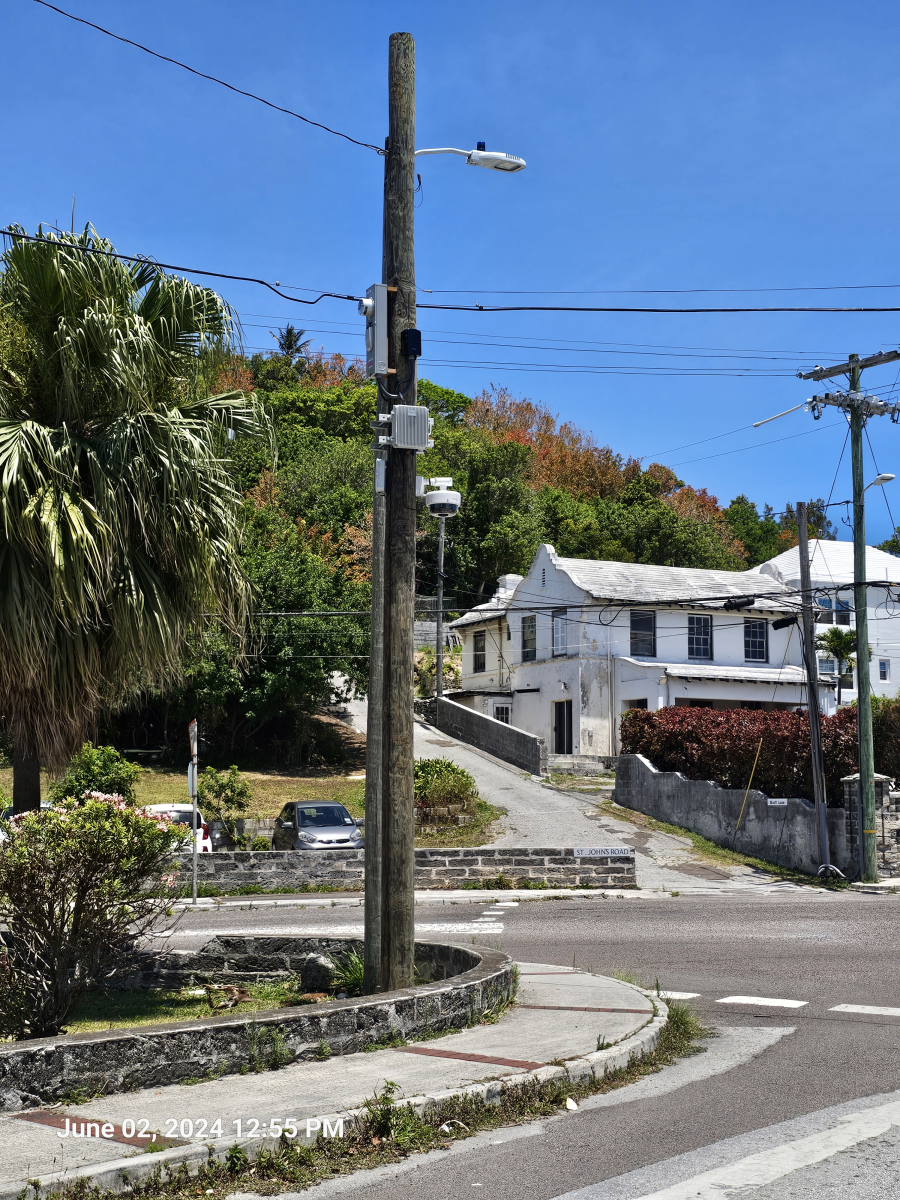
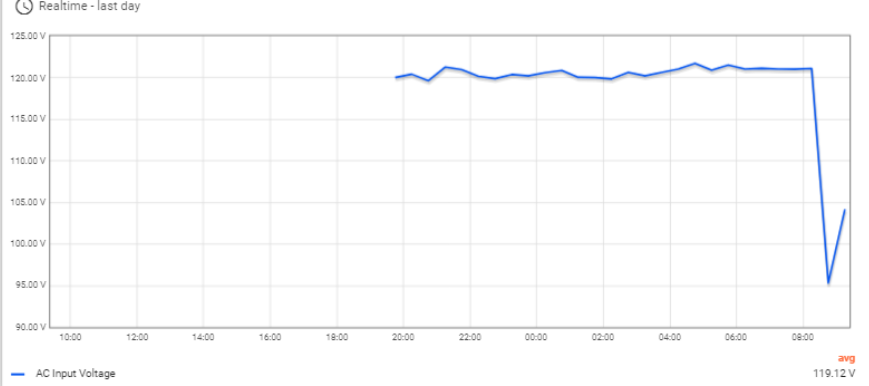
In many countries and regions, power outages are common. If the outdoor IoT solution does not have UPS and battery configurations, site data will be interrupted when the power grid fails. In many scenarios, site data continuity is critical.
Sites relying on Off Grid solar energy
In most cases, the site relies entirely on solar energy for electricity. In this case, there are many aspects that need special consideration. Outdoor IoT solutions generally have low power consumption, and solar equipment such as solar panels, solar controllers, batteries, etc. are designed and manufactured according to standard market requirements, so they are too large for outdoor IoT solutions. For a low-power IoT site, the capacity of solar components available on the market is too large, resulting in a lot of wasted investment. And it will inevitably make the site larger than necessary.
1.5 Outdoor Grounding and Lightning Protection

There is a risk of lightning in the outdoor environment. If the entire system is not properly designed for lightning protection, there is a probability that the power system will be damaged and the IoT devices will be damaged. Especially for areas with frequent thunderstorms, this risk increases exponentially. The risks of lightning are generally:
Direct Lightning Hit
Indirect Lightning Hit
For outdoor IoT solutions, the probability of Indirect Lightning Hit causing system problems is often greater.
For a detailed explanation of lightning hit, please refer to the following link:
Therefore, outdoor IoT solutions must consider the design of grounding and lightning protection. These are often not only for the power input and output of the entire solution, but also for all sensor interfaces and power provision. These designs are relatively professional, and for engineers familiar with software and IoT, this is often another field of knowledge. This brings additional challenges to the design of outdoor IoT solutions.
1.6 Design solutions based on IoT scenarios
There are many types of IoT projects. Taking Edgeware’s main IoT sensors as an example, they are divided into the following IoT sensors:
- Temperature sensors
- Humidity sensors
- Pressure sensors
- Level sensors
- Water quality sensor
- Gyroscope sensors
- Gas sensors
- IR sensors
- Optical sensors
- Smoke sensor
- Image sensors
- Chemical sensor
- Sound Sensors
- Accelerometer sensors
- Light sensors
1.7 Software monitoring and management
Monitoring and management of IoT scenarios are very important, which all depends on the software platform. Based on the changing scenarios of outdoor IoT solutions, the dashboard design, alarms, control logic, etc. of the software platform are all different. If each project needs to rewrite the IoT software platform, it will be a huge workload and costly.
2.Outdoor IoT Solution Based on IoT in A Box
2.1 IoT in A Box Solution Architecture
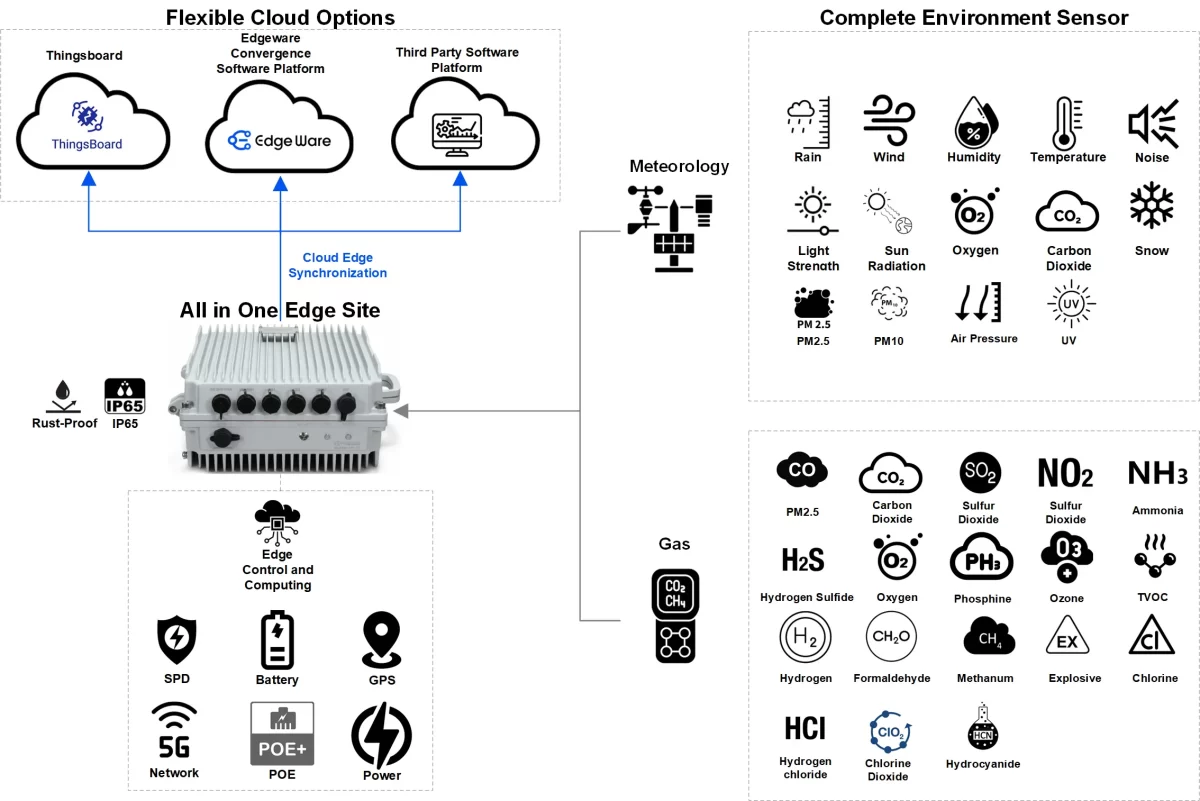
- Because of various problems with outdoor IoT solutions, Edgeware proposed the concept of IoT in A Box. That is, abandoning the usual concept of IoT gateway or IoT router, Edgeware integrates an all-in-one IoT in a box solution for customers. We can configure different modules based on customer needs. For example, for the following aspects:
- Power system
Configure corresponding solutions based on the power acquisition situation in the customer environment. For example, according to the customer’s load situation, we generally provide miniaturized UPS for IoT, and miniaturize both the battery and UPS to match the outdoor IoT scenario. For example, if the customer needs a solar scenario, different from the general standardized solar power solution, we will miniaturize the solar controller and solar battery to make the solar power adapt to the power requirements of the IoT scenario and try to miniaturize the site.
- Network Backhaul
Configure network backhaul according to the actual scenario of the customer. For example, in 4G or 5G scenarios, we configure an IoT edge gateway with 4G/5G backhaul as the main feature for customers. In scenarios where P2P/P2MP wireless backhaul is required, we design a POE port to power the backhaul device and use it as the uplink network for IoT data backhaul. For some areas without any network coverage, we can also provide Starlink with an IoT in a box solution, using POE to power Starlink, and providing Starlink UPS or solar power for Starlink solutions.
- Lightning Protection
According to Edgeware’s experience in outdoor deployment, outdoor lightning protection is crucial to the long-term stable operation of the entire outdoor IoT solution. We will design lightning protection based on customer needs. For solar or power grid input ports, we generally provide protection at the 20ka level or above. For IoT interfaces such as RS485, we will design according to the customer’s actual scenario. For example, if a customer needs 4 RS485s to integrate and communicate with the IoT sensor, we will design lightning protection for these four RS485s and the port that powers the IoT sensor. With a complete lightning protection design, the system can ensure long-term stable operation, and will not cause port damage or even system failure due to the threat of lightning.
- Design solutions based on IoT scenarios
IoT scenarios are often very diverse, and IoT suppliers often cannot cover all needs. This forces customers to choose different manufacturers and integrate them. Problems are prone to occur during the integration and design process. In addition, sometimes the customer’s scenario has its own particularity. For example, it must rely entirely on solar energy. Different regions have different solar energy resources, which leads to different capacities of batteries and solar controllers. In addition, IoT sensors from different manufacturers need to be connected to IoT ege controllers, which will cause many problems.
Edgeware believes that these tasks should not be designed by customers. We listen to customers’ needs and discuss with customers to design an overall solution. The final delivery of the entire solution will include the following parts:
(1) IoT Platform
Dashboard, alarm, control logic, report and other functions designed based on customer scenarios.
(2) IoT Sensors
IoT sensors integrated based on customer scenario requirements. We are not completely limited to Edgeware’s own IoT sensor portfolio. We also integrate customers’ third-party IoT sensors and develop drivers based on Edgeware IoT in A Box for customers. This type of development usually does not charge extra fees.
(3) Pre-designed cables and accessories based on scenarios
Based on customer scenarios, we will pre-design cables for various IoT sensors so that after the entire set of equipment arrives at the site, customers only need to use pre-made cables to connect IoT in A Box and IoT sensor, without the tedious site cable production process.
(4) If necessary, we can help design and produce Smart Pole
Edgeware also has rich experience in designing and manufacturing smart poles, and can customize the design of smart poles based on customer scenarios.
- Software monitoring and management
Because IoT scenarios are diverse, the dashboard, chart, alarm, control logic, etc. of each project are different. As a result, no manufacturer can provide a complete solution for the IoT platform. For example, some manufacturers are good at weather monitoring, but if they also involve fire control, or even SOS management, etc., customers will eventually have to seek IoT platform solutions on their own. The underlying software of Edgeware is based on the design of configurable dashboards. It can integrate various IoT sensors according to customer scenarios, design charts, alarms, control logic, etc. based on customers, and keep the entire solution cost-effective.
2.2 Solar Based IoT in A Box Solution
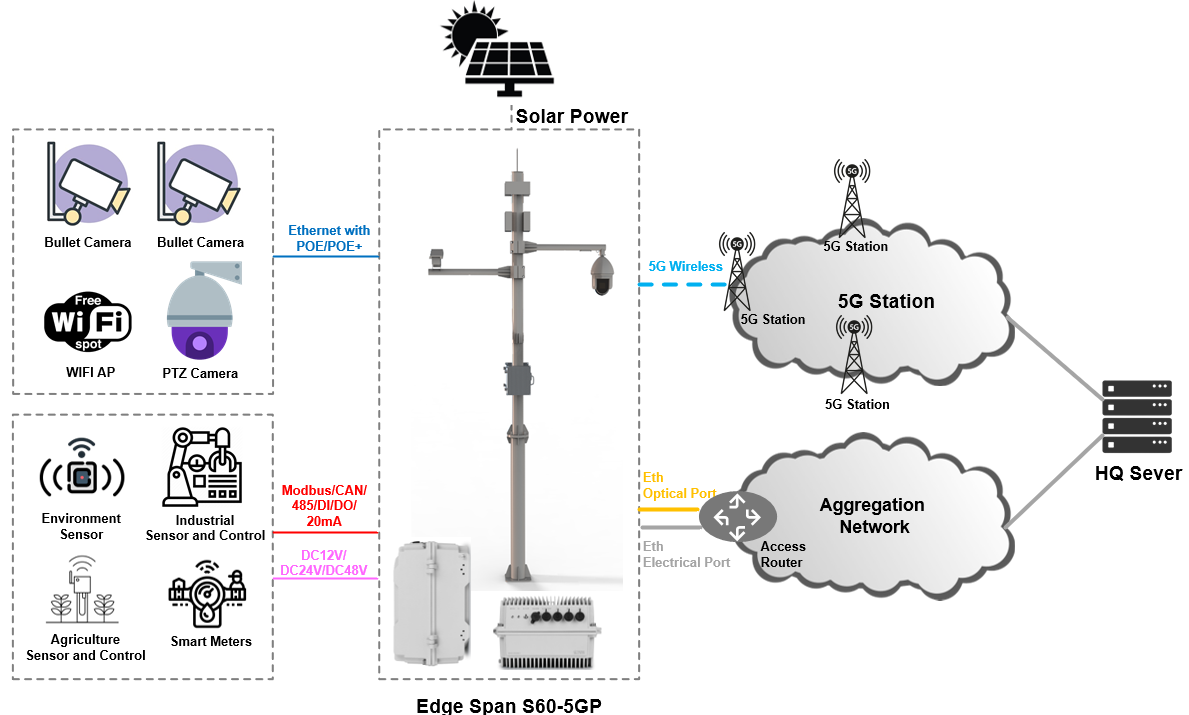
Edge Span S60-5GP is a solar power based IoT in a box solution that integrates 5G router, WIFI, POE, Solar Power, Battery, edge computing and control functions. The system is mainly designed for a variety of scenarios such as video surveillance, outdoor WIFI, remote site coverage, energy network control, industrial network control, smart city, environmental detection, smart agriculture, etc. In conjunction with Edgeware or the customer’s third-party IoT sensor, a more comprehensive one-stop solution can be achieved. Edge Span S60-5GP has a built-in Node-red programmable core, and Edgeware can implement the control, monitoring and management functions required by the customer according to the customer’s scenario. It can also be delivered to the customer as a white box, and the customer can develop the corresponding scenario by themselves. The system is generally equipped with 3 802.3at (POE+) interfaces. Interfaces such as modbus, DC12V/DC48V, DI, DO interfaces which can be configured according to the customer’s scenario requirements.
2.3 UPS Based IoT in A Box Solution

Edge Span U60-5GP is an all-in-one UPS based IoT in a box solution that integrates 5G router, WIFI, POE, UPS, Battery, edge control functions. The system is mainly designed for a variety of scenarios such as video surveillance, outdoor WIFI, remote site coverage, energy network control, industrial network control, smart city, environmental detection, smart agriculture, etc. In conjunction with Edgeware or the customer’s third-party IoT sensor, a more comprehensive one-stop solution can be achieved. Edge Span U60-5GP has a built-in Node-red programmable core, and Edgeware can implement the control, monitoring and management functions required by the customer according to the customer’s scenario. It can also be delivered to the customer as a white box, and the customer can develop the corresponding scenario by themselves. The system is generally equipped with 3 802.3at (POE+) interfaces, 1 port 802.3bt(POE++) 110W which can be configured according to the customer’s scenario requirements. Modbus, DC12V/DC48V, DI, DO interfaces are also can be configured.
3.Summary
The deployment of the Outdoor IoT solution must be designed based on the scenario. The previous patchwork solution based on IoT cabinet is not the best solution. Edgeware is willing to discuss and design with customers based on IoT in a box solution to provide a better one-stop solution to accelerate the development of IoT.

